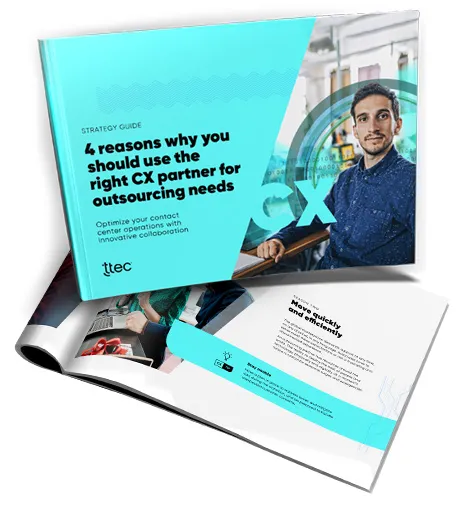Outsourcing and managed services are appealing options for many companies at a time when workforces are stretched thin. But don’t be fooled—these terms aren’t interchangeable. Both involve receiving business services from a third party but determining which of the two options is the better fit could make the difference between a thriving company versus just staying afloat.
What is outsourcing?
Although managed services and outsourcing both involve hiring a partner organization, they encompass different levels of work. Outsource firms provide services for narrowly defined business processes. For instance, a company may want to outsource specific tasks such as handling payroll or tier 1 help desk calls to a partner. With outsourcing, business leaders select specific services and business needs that can be handled by an external partner. There are also different types of outsource partners including onshore, offshore, and nearshore partners.
What are the top reasons to use outsourcing?
Outsourcing business processes and tasks can free up employees to focus on more complex or valuable work; it can extend resources, such as sales support, for targeting new or underserved markets; support new product and service rollouts; and provide expertise within a specific industry focus. An outsource partner can also give companies access to digital systems and software services without paying for maintenance fees.
What are managed services?
In comparison to outsourcing, managed services offers a more holistic approach to supporting a company’s business needs. A managed services outsourcing model offers a comprehensive range of services within one or several areas, such as IT or ERP. Instead of supporting a few business processes, a managed services provider provides end-to-end operational support and enhancements for a seamless end-user experience.
For example, Customer Experience as a Service (CXaaS) is a cloud-based customer solution for planning, designing, and executing activities that encompass all parts of the customer experience. CXaaS operations are typically managed by a third-party partner on behalf of a brand. A CXaaS managed services provider offers end-to-end management of CX and employee experience operations and continuous optimization for global talent (e.g., recruiting, onboarding and training), technology, consulting and implementation services.
What are the top reasons to work with a managed services provider?
For companies that are looking to integrate different solutions, service providers, and technology platforms with a unified plan, a managed services provider is the better choice. A good managed services provider will perform an assessment of the current infrastructure and operations to understand the pain points. The partner will determine whether any operations are compromising performance and create a plan for immediate improvements and long-term enhancements, in addition to providing skilled staff to support the company’s business needs. A skilled managed services provider will also proactively share best practices and suggest ways to increase savings and trouble-shoot problems before they arise.
Whether you are looking for an outsource or managed services provider, working with the right partner can propel a business forward faster and more effectively than doing it alone. The key is to define your business needs: do you want to outsource a specific business process or do you need extensive support? Next, find an external organization that always has your back. Look for a partner with in-house specialists in a wide range of technologies and skillsets, an extensive partner ecosystem of their own, various support models, and the flexibility and scalability to meet your enterprise needs.
More outsourcing and managed services outsourcing resources:

We hope you enjoyed this blog post exploring the similarities and differences between managed services and outsourcing. To explore these topics in more detail, here are additional thought leadership resources from our CX and managed services outsourcing experts.
4 reasons why you should use the right CX partner for outsourcing needs: Working with an outsourcing partner provides numerous cost and innovation benefits while improving the customer experience. By leaning on an expert who knows customer management inside and out, companies will be able to offer great customer care experiences with less risk and more reward. In this strategy guide, learn how an end-to-end outsourcing services provider can help you improve customer experience and operational KPIs.
11 ways to grow your business with sales outsourcing: In this strategy guide, learn how outsourcing inside sales can help keep your business agile and innovative.
4 questions to decide if contact center outsourcing is right for you: If done right, outsourcing customer care and outsourcing managed services is an opportunity to gain specialized knowledge and resources, as well as quick access to a flexible workforce and innovation ideas. In this article, we look at four questions your company should ask to determine if contact center outsourcing is right for your brand.
CCW market study on the state of contact center industry, featuring TTEC: The contact industry is in a constant state of evolution. What’s really happening in contact centers, and where is the industry going? Get this market study for exclusive research and insights about the state of the industry when it comes to technology, employee engagement, omnichannel strategy, and artificial intelligence.
Digital Transformation Best Practices: Customer service is not the same as it once was. To keep up with customers’ growing expectations, it’s important for brands to accelerate digital transformation in the contact center. Cloud computing, omnichannel orchestration, and automated technology services are just some ways that the contact center of tomorrow is closer than you think.















